A fused bulb does not glow. Why?
Step-by-Step Solution:
1. Understanding the Bulb: A bulb consists of a filament that glows when electricity passes through it. The filament is a thin wire made of a material that can heat up and emit light when an electric current flows through it.
2. What Happens When a Bulb Fuses: A fused bulb means that the filament inside the bulb has broken. This is often due to excessive current flowing through the filament, causing it to overheat and break.
3. Effect of a Broken Filament: When the filament breaks, it creates an open circuit. An open circuit means that there is a break in the path through which electricity can flow.
4. Conclusion: Since the circuit is incomplete due to the broken filament, no electric current can flow through the bulb. As a result, the bulb does not glow.
Final Answer:
A fused bulb does not glow because the filament inside it has broken, creating an open circuit that prevents electricity from flowing.
---
A fused bulb does not glow because the filament inside it has broken, creating an open circuit that prevents electricity from flowing.
Topper's Solved these Questions
- ELECTRICITY AND CIRCUITSBOOK - NCERT EXEMPLARCHAPTER - ELECTRICITY AND CIRCUITSEXERCISE - LONG ANSWER QUESTIONS
4 Videos
- ELECTRICITY AND CIRCUITSBOOK - NCERT EXEMPLARCHAPTER - ELECTRICITY AND CIRCUITSEXERCISE - VERY SHORT ANSWER QUESTIONS
2 Videos
- FUN WITH MAGNETSBOOK - NCERT EXEMPLARCHAPTER - FUN WITH MAGNETSEXERCISE - LONG ANSWER QUESTIONS
7 Videos
Similar Questions
An electric bulb is connected to a cell through a switch as shown in Fig. 12.7. When the switch is brought in ‘ON’ position, the bulb does not glow. What could be the possible reason/s for it? Mention any two of them.
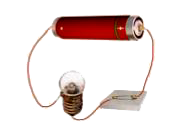
View SolutionA wire connected to a bulb does not glow, whereas the filament of the bulb gilows when same current flows through them. Why?
View Solution
Knowledge Check
Question Stimulus :-
An electric circuit is made using a torch cell, a bulb and copper wires. The bulb does not glow. The reason may beAthe copper wires have more length than what is requiredBthe torch cell is connected with its polarity reversedCthe torch cell is touched by the handDthe copper wire does not touch the cellIn the circuit in Fig. 7.27, bulb B does not glow although ammeter A indicates that the current is flowing . Why does the bulb not glow?
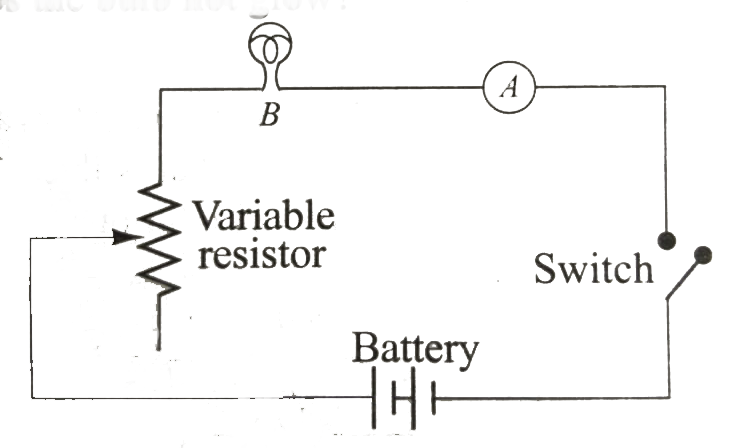 AThe bulb is fused .BtThere is a break in the circuit between bulb and ammeter.CThe variable resistor has too large resistance.DThere is a break in the circuit between the bulb and the variable resistance.
AThe bulb is fused .BtThere is a break in the circuit between bulb and ammeter.CThe variable resistor has too large resistance.DThere is a break in the circuit between the bulb and the variable resistance.Sometimes electric bulb does not glow even when electric switch is ON , then we say that
Aelectric circuit is closed circuitBelectric current is lowCelectric bulb is fusedDelectric switch is working properly .
The bulb does not glow in the setup shown in List the possible reasons. Explain your answer.
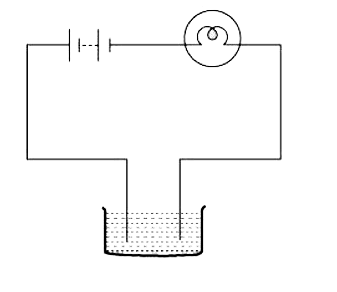
View SolutionThe bulb does not glow in the setup shown in List the possible reasons. Explain your answer.

View SolutionThe bulb does not glow in the set-up shown in the figure. List the possible reasons. Explain your answer.
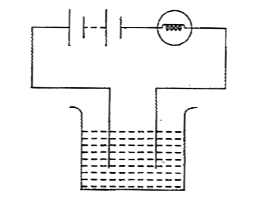
View SolutionIrshad connected a bulb to a cell as shown but the bulb did'not glow. What could be the reason?
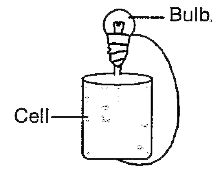
View SolutionWhy does an electric bulb does not glow even it is connected to the cell ?
View Solution
